IGOR JOSIFOVIC JUDITH DE GRAAFF
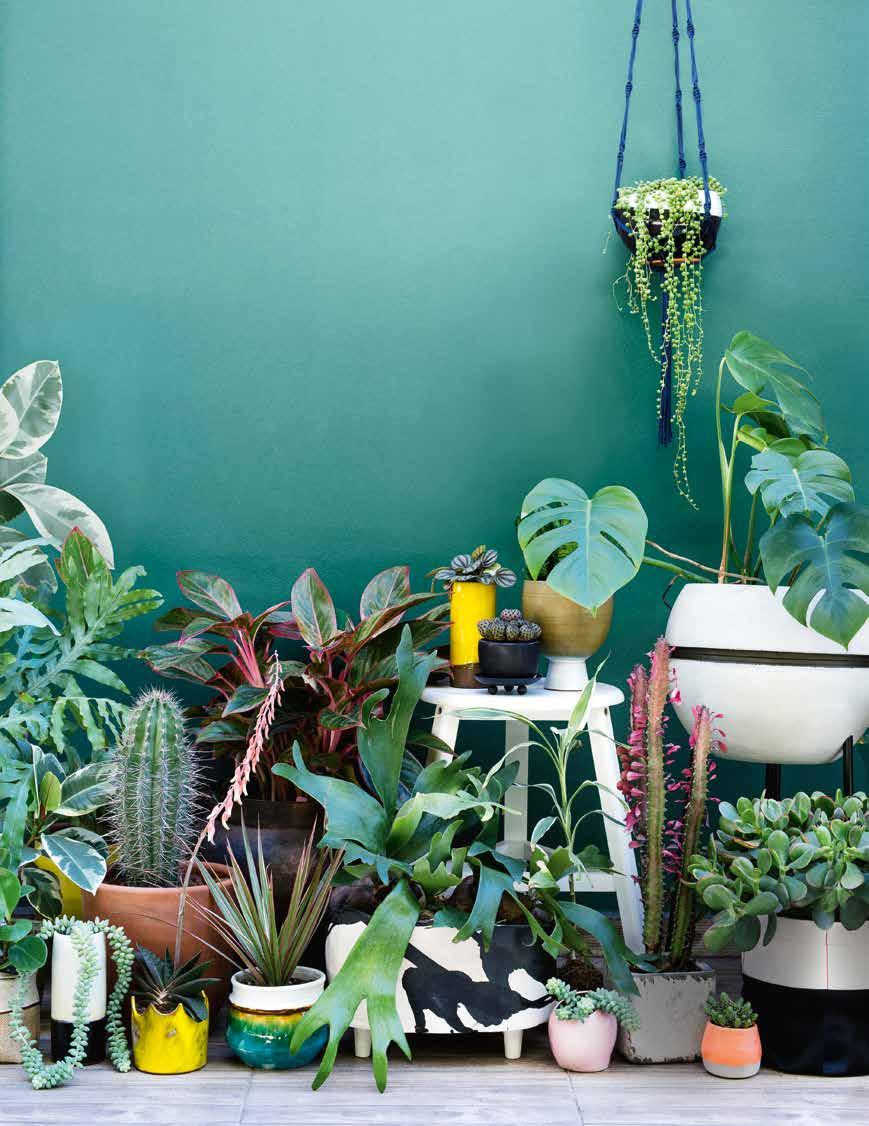


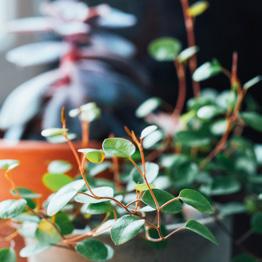
You won’t find a TV here. Or any glossy new furniture pieces, for that matter. Jeska and Dean Hearne’s little bungalow close to Hastings in England can truly be called a collected home, brimming with character and personality. It has been created over time with lots of love, creativity and warmth, and is home not only to the two young creatives, but to their two cats, Marlo and Wallis, and around 60 plants.
1
What does living with plants mean to you?
After I learnt to keep my first few plants alive, being surrounded by them definitely evolved into a natural way of life for us. Both our parents have always had plants in their homes and love gardening too. I grew up in the late ’70s and early ’80s surrounded by huge cheese plants, bonsai trees and cacti. There was always an avocado pip suspended in a jar of water on our kitchen windowsill, too, that my dad was trying to germinate. I loved visiting my neighbours’ greenhouse as a child, and my grandma has a floral jungle in her conservatory, so I think it was always in the stars that I would be a plant keeper.
What do you value about your plants?
I can’t imagine not being surrounded by green things. They make the air cleaner and our home a happier place to be. Spending some time each week tending to them is the closest thing to meditation for me. It makes me feel calm and happy.
Plant care seems daunting to some people. How do you care for your plants? What is your routine, if any?
I will admit that I am loving but a bit haphazard with my plant care. I have kept most alive with just watering little and often, a “treat them mean – keep them keen” approach. I feed them in growing season when I remember, and of course I do talk to them too. ;)
4
Do you have a secret plant-care tip to share?
Don’t be scared of experimenting with cuttings –you always learn more each time you try. A few might die, but lots will survive and you can nurture them into fully grown plants.
Plants are a wonderful addition to any interior. What is your styling tip when it comes to plants? Gather them in little groups of different leaf shapes and colours – mix their textures, pair feathery ferns with tough full-leaved plants. Just generally go wild with layering different pots, heights and so on.
Look for old terracotta pots at flea markets, farmer’s markets, garage sales or second-hand shops. Or create that rugged look yourself by painting your new terracotta pots with garden lime. Sand them afterwards for a more “used” look.
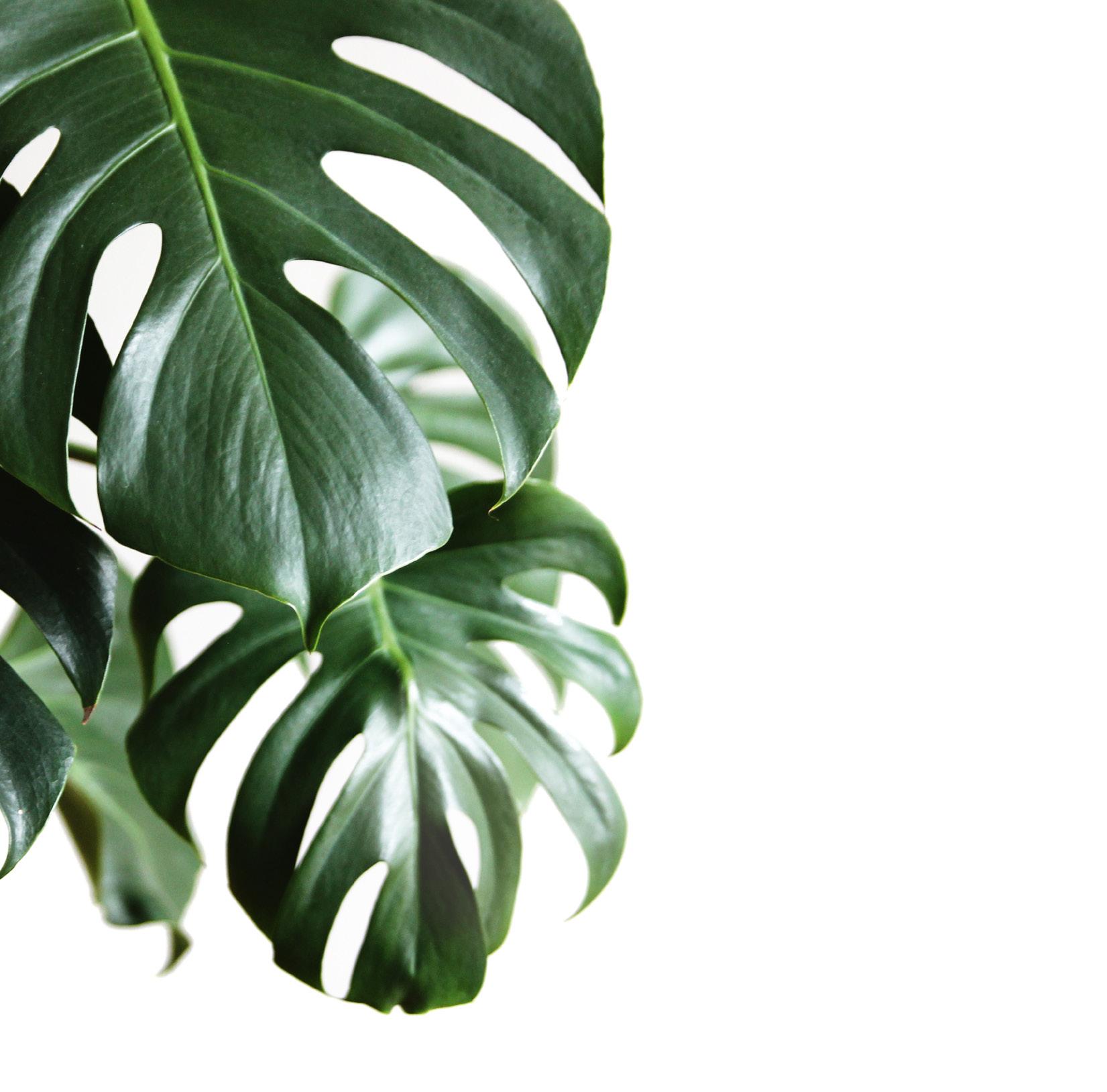
With its lush, wild appearance, large split leaves and swinging aerial roots, the Monstera deliciosa is a real jungle queen. If you aim for an instant jungle look in your home, this is the plant to go for.
Unlike many other plants, the Monstera deliciosa guarantees an instant jungle vibe in any room. And yet this spectacular houseplant is very easy-going. The Swiss cheese plant is a low-maintenance houseplant and thus ideal for anyone who considers themselves to have a black thumb.

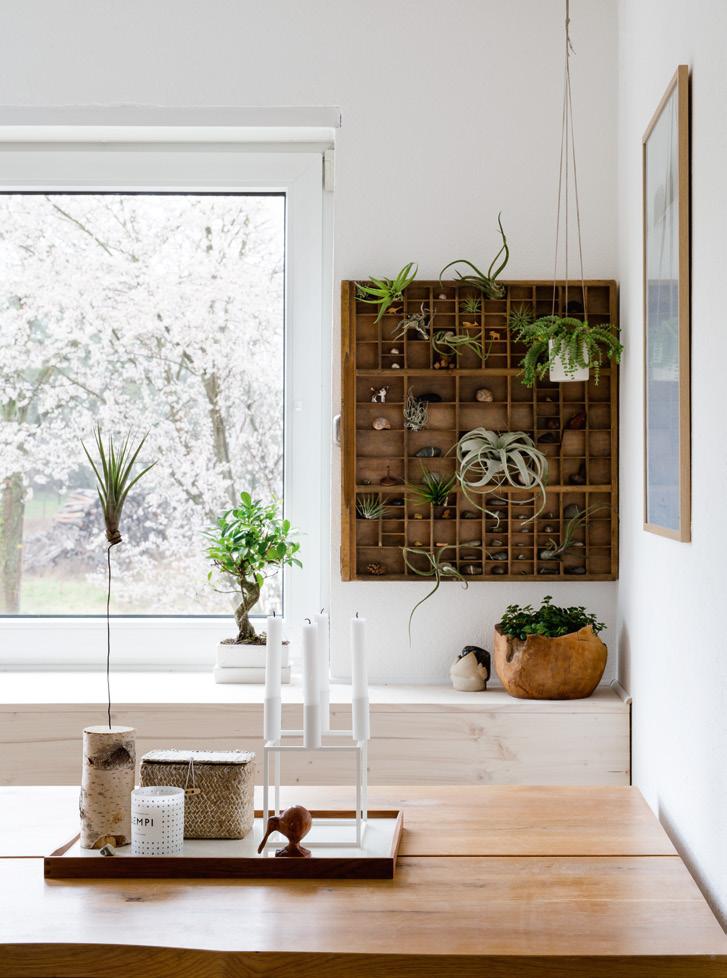
Pepper, Michael and Nahele’s semi-detached house is located a 30-minute drive south of the German city of Heidelberg and is inhabited not only by the happy family but by a big bunch of cuddly toys and plants as well.
“A room without plants appears shallow, almost dead.” Pepper kicks off our plant conversation with a strong and comprehensible opinion. And she lives by her words – plants thrive on all three floors and in all rooms of the house: in the kitchen, the bedroom, Nahele’s room and the bathroom. Plants are also essential for Pepper’s style philosophy. She has named her own style “Scethno”: a mix of Scandinavian clear lines and neutral colours combined with wild, primal patterns of an ethno style and collectibles from Africa. All of this is brought to perfection by the addition of a growing houseplant collection.
The vintage cabinet houses snail shells, stones, shells and a wonderful collection of air plants (Tillandsia).
Two Echeveria are cosied up in an old coffee grinder. Line the drawer with cling film to protect it from moisture.

Tillandsia use their specialized leaves to absorb water and nutrients from the air, which is why they are known as air plants? Most Tillandsias come from humid climates, so they appreciate high levels of humidity. Placing them next to potted plants will be a great help to them since they will be able to absorb the moisture that evaporates off the other plants when they’re watered.

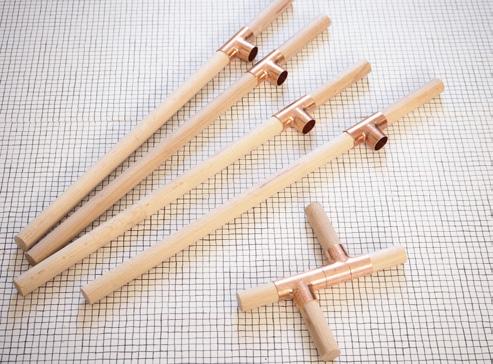
YOU NEED:
Four round dowel rods with a diameter of 18 or 22 mm and length of 1 metre (from the hardware store)
• Six T-connections of copper pipe with an inside diameter of 18 or 22 mm (from the plumbing department at the hardware store)
• Ruler, pencil and jigsaw
To create the legs, mark on the dowel rods where to saw them. If you want your plant stand to be around 50 cm tall, saw four rods of 40 cm and four sticks of 10 cm. The longer the legs (and the larger the space in the middle), the more unstable your plant stand will be. A long and a short stick together make one plant stand leg.


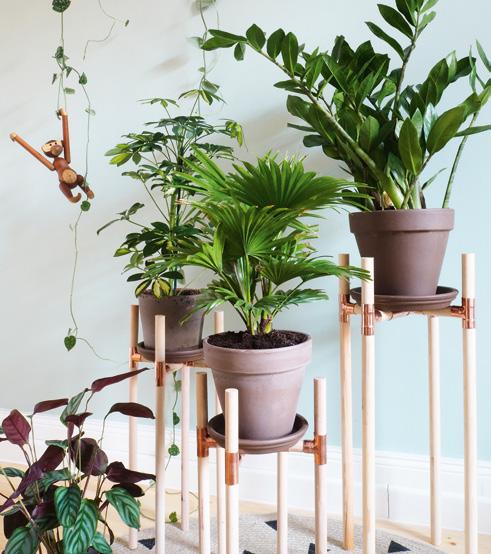
The cross for the centrepiece is made with five pieces of wood and two copper T-connections. The length of the individual wooden sticks will be determined by the size of your plant pot.
Smooth the ends of the wooden dowel rods with sandpaper. As the last step, attach the legs to the centrepiece.
Find out more about this and other projects at craftifair.com
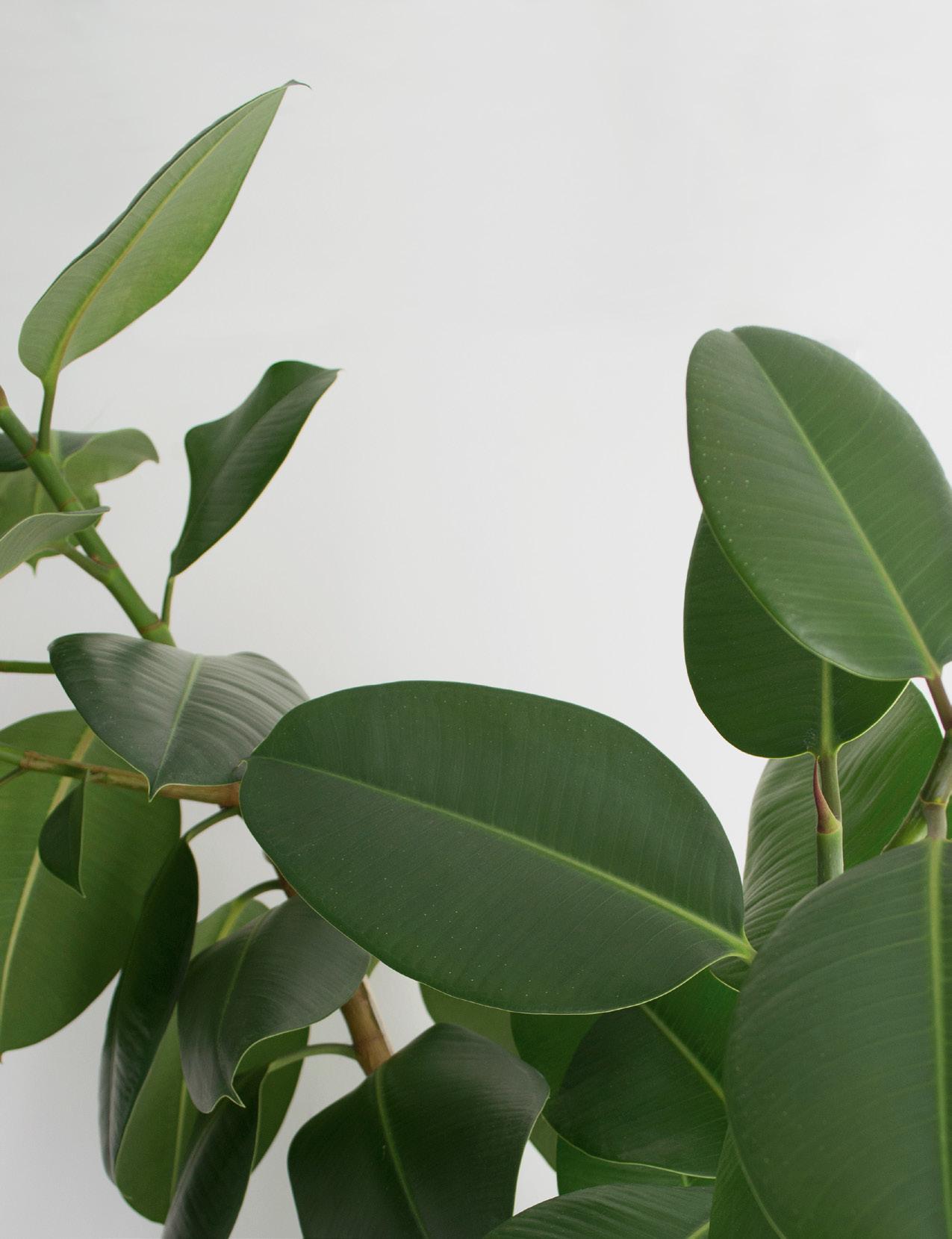
A Ficus elastica has many benefits. Besides its handsome dark and glossy look, it’s also particularly effective at removing formaldehyde from the air. It’s one of the more powerful air-purifying plants out there.

Cosy get-together: the fiddle leaf fig sets the tone while the various succulents, the Pilea, the Oxalis and the little home-grown avocado tree listen carefully.

MORGANE INHERITED SOME OF THE PLANTS FROM HER MOTHER. THESE ARE PRECIOUS HEIRLOOMS.
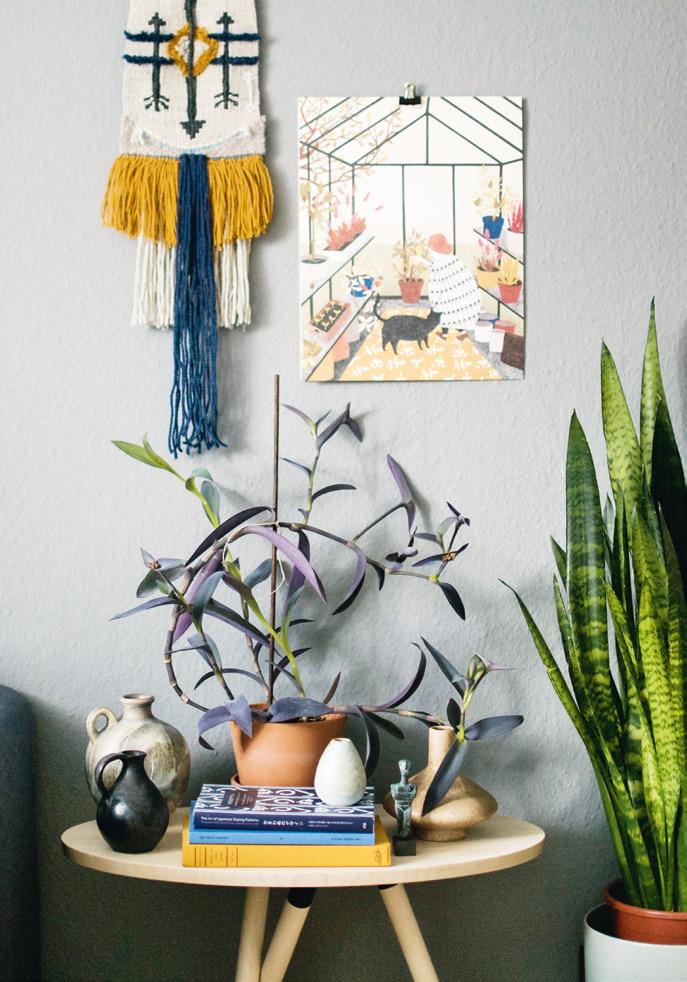
Spiderwort are very undemanding houseplants. Besides an abundance of light, preferably direct sunlight, they don’t require a lot of care. You can stick to the motto “less is more”. Less water, less fertilizer, and your Tradescantia will be happy. The plant is also particularly easy to multiply: you can grow new plants from small cuttings without too much effort. Within a short period of time, a young plant or cuttings can grow considerably. Initially, the plant grows upright, but under the weight of the leaves, it will then drop its stems down to all sides. Therefore, Tradescantia are exceptionally suited for hanging baskets or on wall shelves. Some people say that these plants are like weeds and that this makes them less attractive. But we as plant lovers truly enjoy the wild jungle look of a big, healthy Tradescantia!
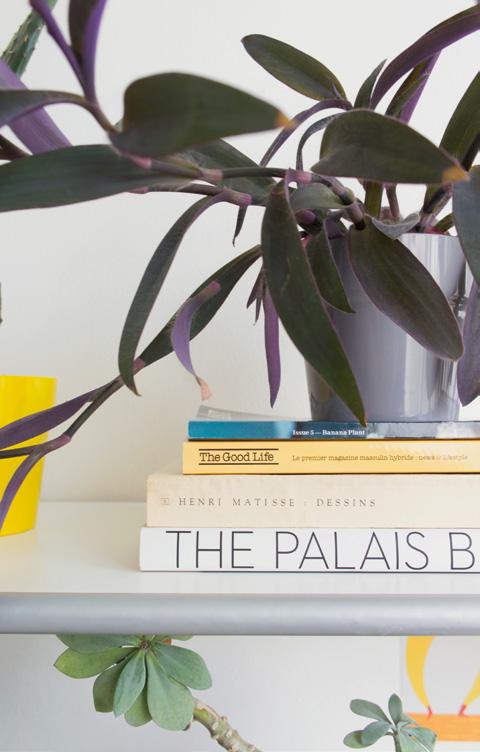
Styling: ochre, blue and the dark purple of a Tradescantia make for great visual harmony in front of a grey wall.
Detail: the leaves feature hues from dark green to deep purple.
The flowers of the Tradescantia are small, fragile and mostly soft pink or purple.


Location: Very bright, even direct sunlight. Perfect for south-facing windows and potting in hanging baskets.
Temperature: Normal room temperature. The plant does not tolerate frost.
Watering: Water sparingly when the top layer of soil has dried out. In winter, water less frequently.
Fertilizer: Liquid fertilizer once a month in the summer, ideally half the recommended dose.

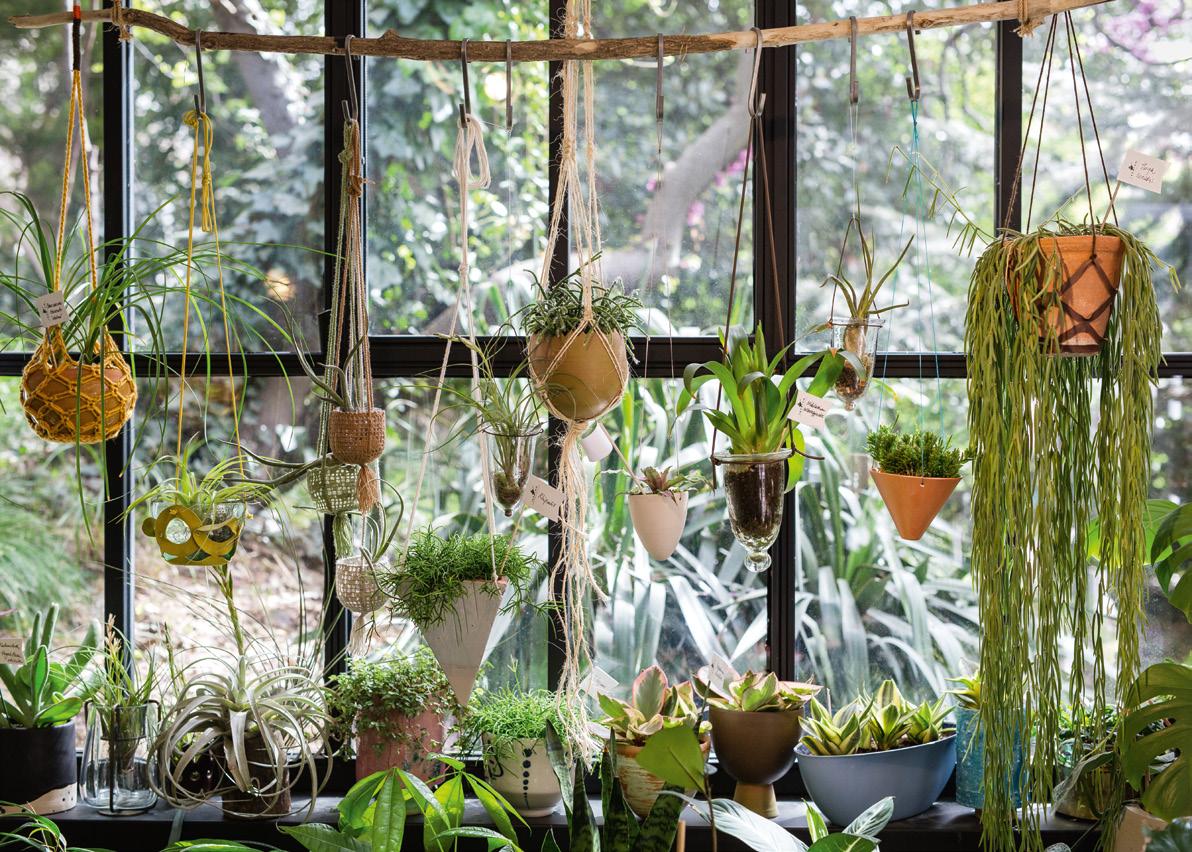
Fem is a woman with an infectious smile – her zest for life is almost tangible when you meet her in person. What also seems almost tangible is her passionate love for plants. This love not only defines her professional life as the founder and manager of the plant studio Labofem – it definitely defines her entire life.
After a stellar career in public relations and some changes in her personal life, Fem decided to take the leap and turn her life inside out. She left the PR business with nothing but an industrial stool she liked from the office (it now serves as a plant stand, of course) and let her passion guide the way: she opened a plant studio called Labofem, which was initially in her apartment as a sort of “open studio”. However, the open-house situation soon took over her entire private life – plants were everywhere, and clients were constantly making requests for visits. It was then that she separated her private and business life by opening a nearby plant studio. Even though home and the workplace are separated now, her life is still strongly dominated by plants in both places.
MY HOME WAS A PLANT STUDIO AND OPEN HOUSE FOR A LONG TIME. TODAY I RUN A PLANT STUDIO NAMED LABOFEM NOT FAR FROM MY HOME.

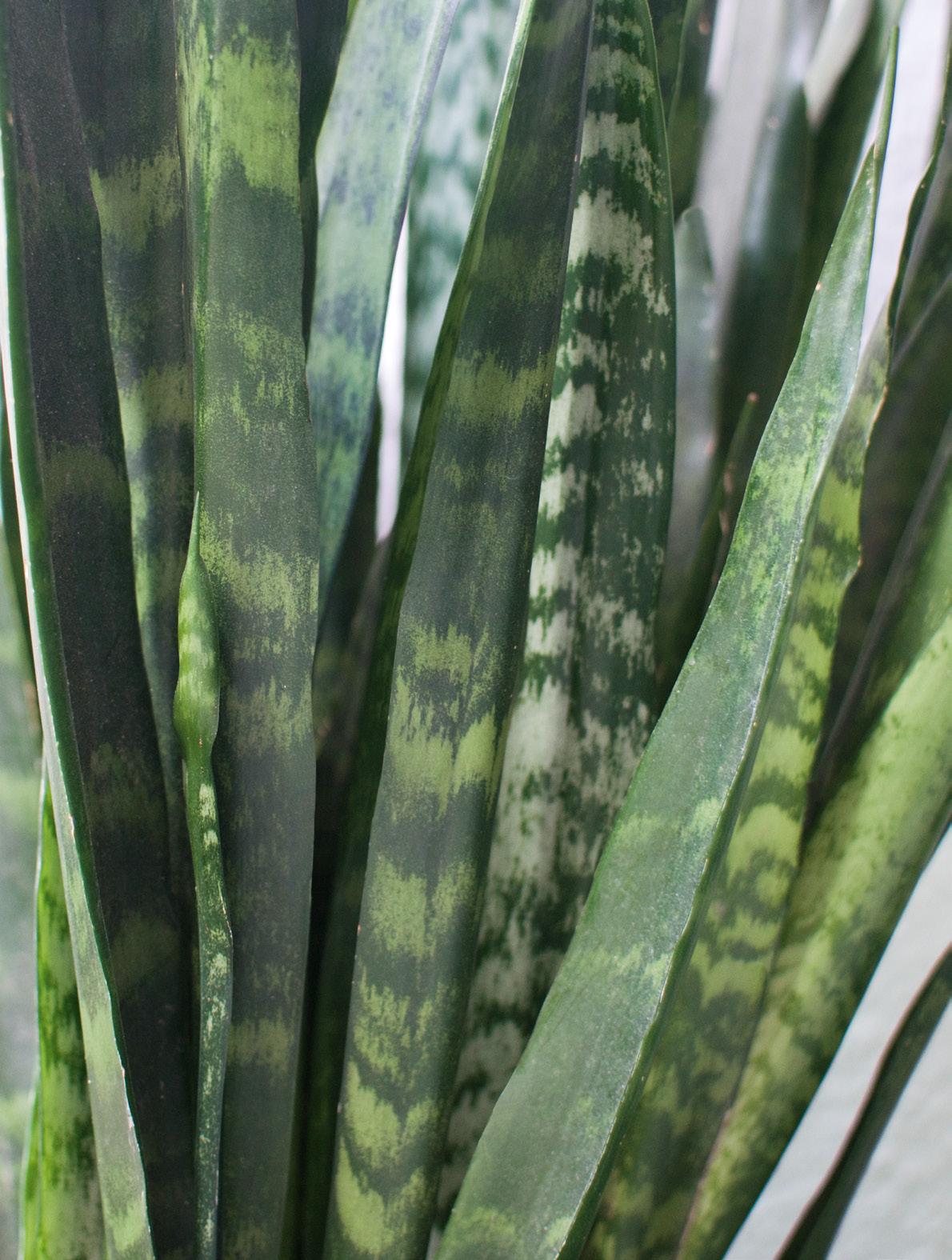
Location: Practically anywhere, from bright spots to shaded ones.
Temperature: Warm, between 18°C and 27°C. The temperature should never go below 13°C.
Watering: Water sparsely. Sansevieria will rot when overwatered. They are particularly draught-tolerant, wait if in doubt.
Fertilizer: Once every month during the growth period, diluted by 50%. The plants don’t need to be repotted very often – they like to fit tightly into their pot. Instead of repotting, you can remove a few centimetres of soil and replace it with fresh soil that covers the exposed roots.